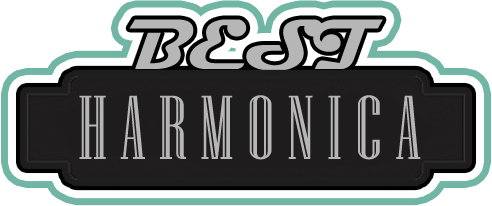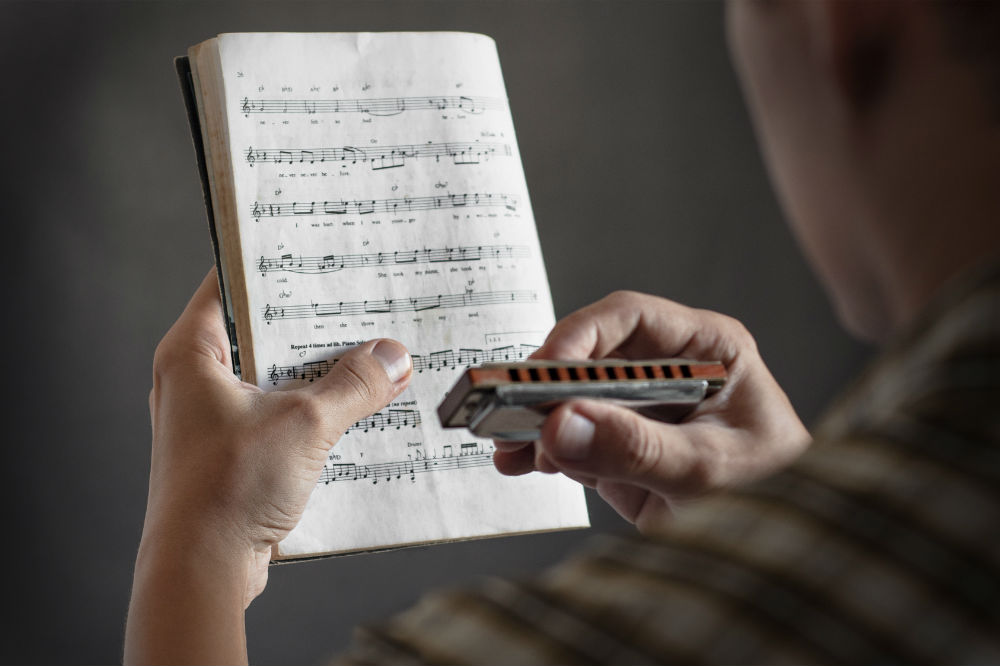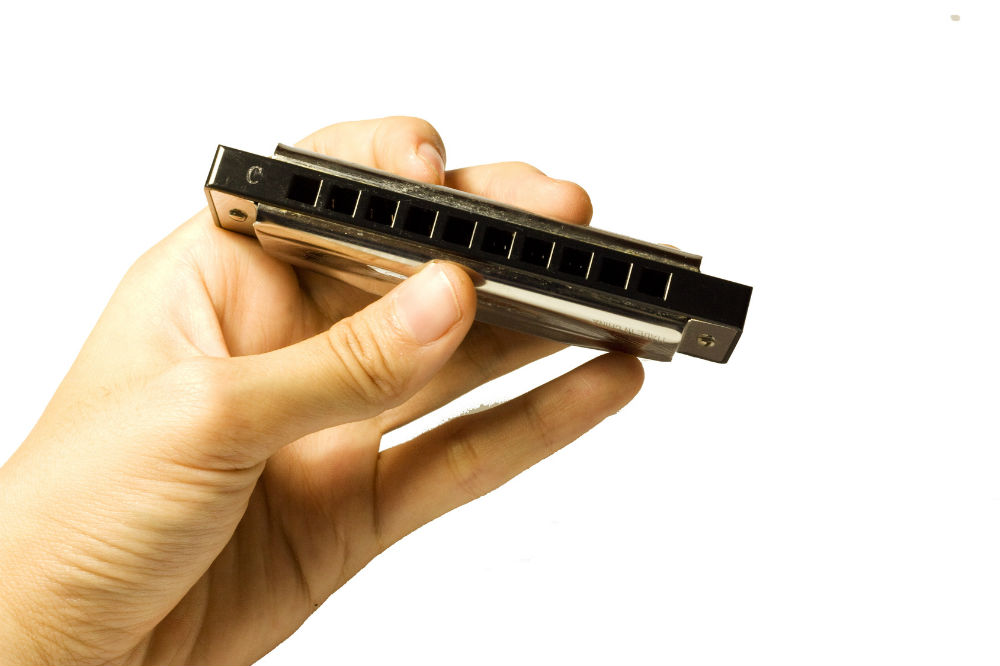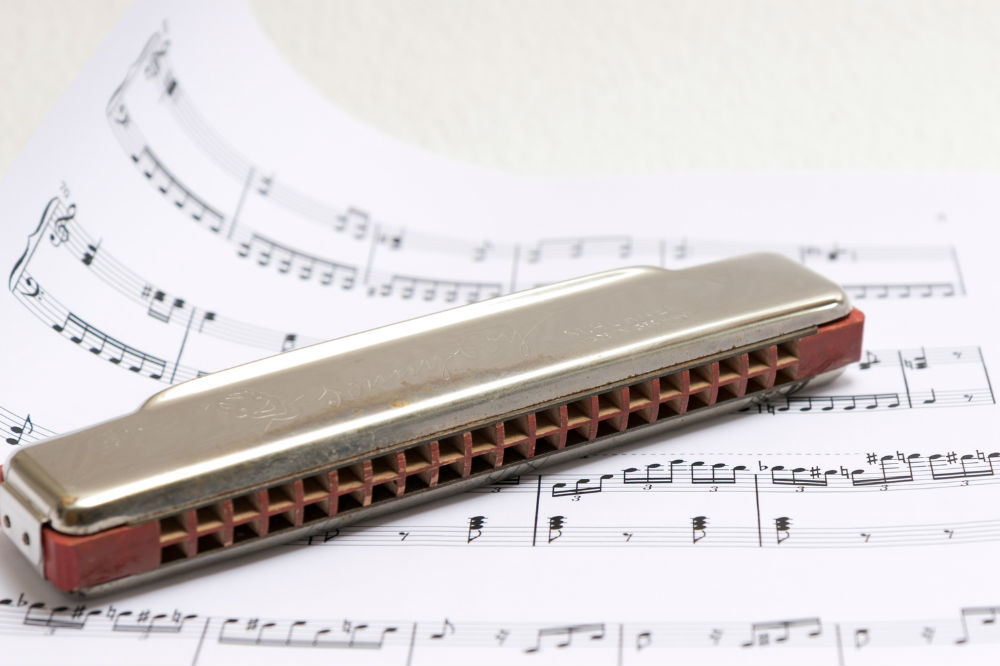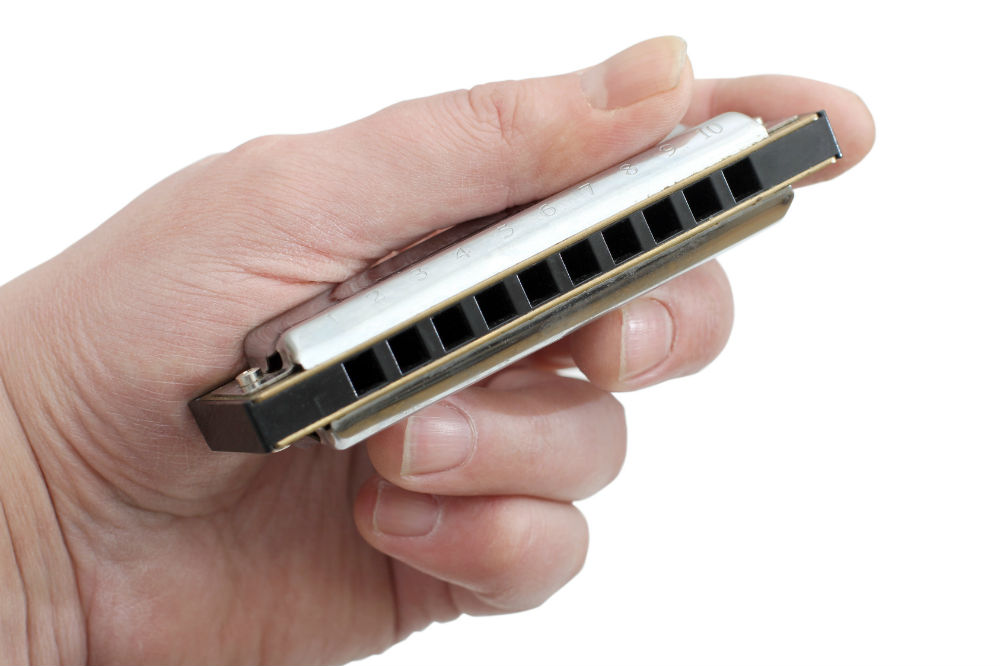If you have just recently purchased your harmonica, you may be wondering what comes next in the process. Some users may even get frustrated because they do not know what to do next with their harmonicas once they have bought it. To help you, here is a short guide on how to start playing harmonica for beginners. Already a few sessions in? We have your back! Here’s a few tips on speeding up your Harmonica Learning Process!
Learning the blowing and drawing technique
First, it is important to understand the parts of your harmonica and learn which hole corresponds to which note key.
When you start playing your harmonica from left to right, you would notice there is a skip in the notes so it will sound like 1, 3, 5, and 8 or C, E, G, C if your harmonica is in the Key of C Major. The reason for this skip is that you have to direct the air to get the other notes through inhaling and exhaling, a technique known as blowing and drawing.
The top most part of the hole is for blowing, while the bottom half of the hole is for drawing. For example, if you blow on hole 9, you would produce a G note but when you draw the air back in, you would hear an F. It may be confusing at first, but harmonicas often have guides as to which notes are produced by blowing and drawing each hole, so double check your guide.
How can you play your harmonica?
It may look simple at first, but playing a harmonica is actually quite difficult at first because you have to make sure the air flows properly and produces the volume you want to be heard. There are actually two major methods of playing your harmonica: the tongue and the pucker method.
In the tongue method, it is important you relax your mouth first and ensure that it is covering several holes in the process to ensure that the air is concentrated in these areas. Then cover those you don’t want to make a sound with your tongue.
Many players prefer this method if they want to split the notes the harmonica plays. This also ensures that you will be able to produce two notes at the same time even if they are not beside one another.
The pucker method, on the other hand, starts with relaxed lips. When you start inhaling or exhaling, you will hear the notes of the areas that are affected. To play, just make your lips go into a ‘kissing’ position and start from there. Also guide your lips along the harmonica and get a feel of it. It can be difficult to learn this playing method, but with a little patience, it can be done.
What is bending?
Harmonicas are well-known for being able to bend pitches. When you bend a note, you change its pitch and volume. Once you inhale or exhale, your mouth position changes, influencing how the pitch is played and how fast it would react.
Bending notes are common in blues music. It is actually very difficult to start bending notes at first but it can be learned.
To bend a note, there are several techniques you can learn. The first method is called the tilt, which relies on changing the airflow’s angle for a certain hole. You need to experiment to find which angle works best to get the tune you want when bending using this method.
If you don’t want to use the tilt method, you can also start by changing the movement of your tongue when playing. Many experts say that to make a perfect bend, no matter what method is used, you just need to practice breathing and improve your capacity to direct the flow of the air in the harmonica.
How to clean your harmonica?
After you play your harmonica, it is important you clean it regularly to ensure that no gunk or residue is stuck inside it which may affect your playing. If your harmonica has a plastic comb, you can easily clean your harmonica with just running water and allow it to dry on its own.
You may also opt to disassemble it and clean it to ensure that nothing is indeed in the way of your reeds. Make sure you remember where each screw is located and clean the parts with soap and water.
Just make sure you clean it thoroughly as you may find yourself playing with the harmonica tasting like the soap you use. If there are metal components in it, make sure you dry everything before putting it back.
Final Remarks
If you are ever just sitting around, remember those are valuable moments to be practicing! Any time from waiting for the bus, to being stuck at home, even to a slow walk in the street is a great opportunity to practice what you know and master what you struggle with.
The biggest issue for those learning any instrument is the time commitment. So if you can overcome this, nothing will stop you from rising up to be one of the best at playing harmonica!
